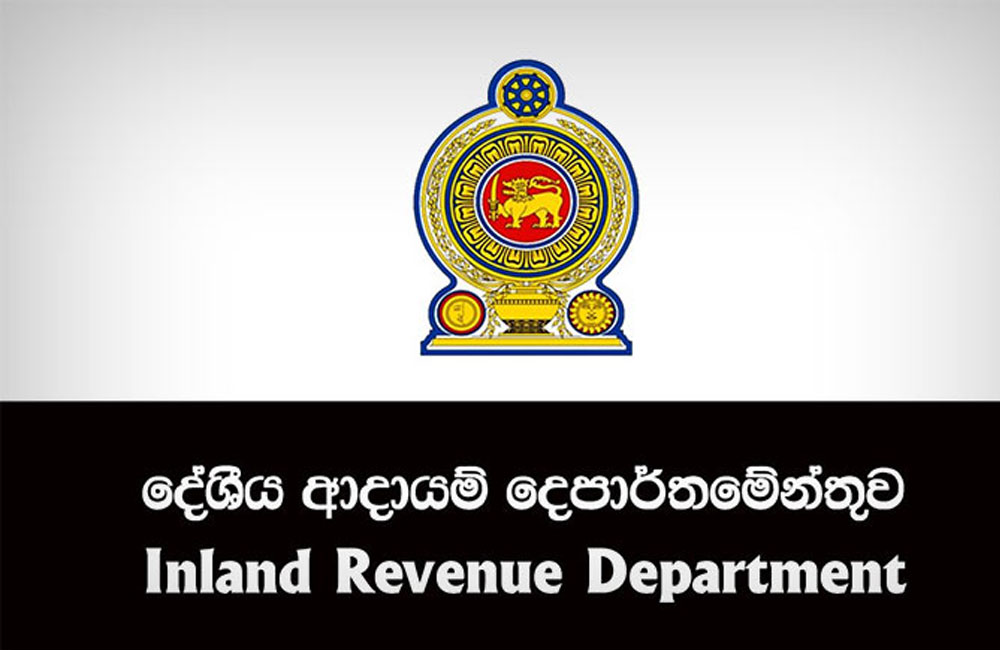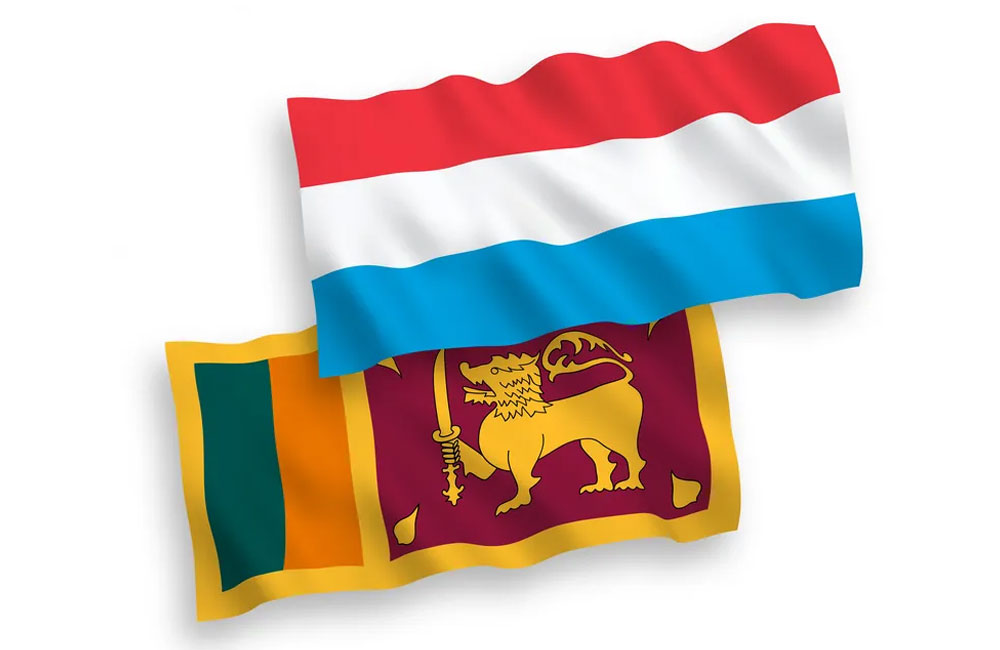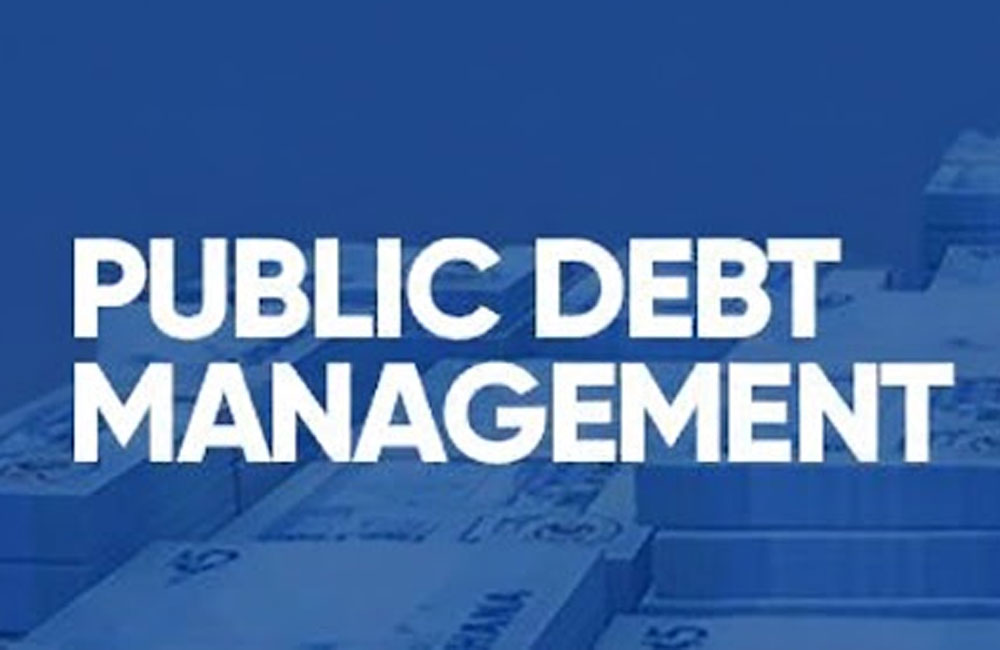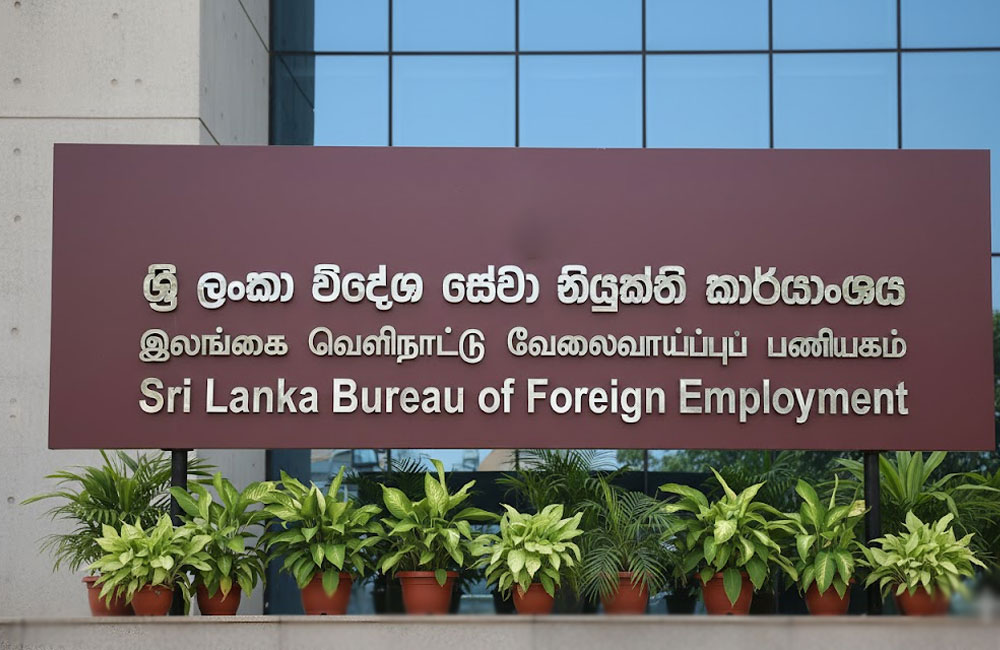News

IRD’s 2025 Surge Signals Stronger Tax Compliance and Administration
Sri Lanka’s Inland Revenue Department (IRD) is recording one of its strongest years in recent history, with new data showing sharp improvements in taxpayer registration, revenue mobilisation, and overall administrative performance compared to 2024. Under the current leadership, the Department has reported a significant expansion of the tax net, strengthening the country’s fiscal position amid continued economic recovery efforts.
At a media briefing organised by the Government Information Department, Senior Deputy Commissioner P. Nandana Kumara revealed that 200,000 new individual taxpayers have been added so far this year, taking the total number of registered individuals to 1.2 million. This marks one of the largest annual increases in recent years and reflects a sustained push to improve compliance and reduce tax leakages.
The Department’s 2025 performance is also supported by the formalisation of business activity. Kumara noted that the IRD has registered 18,000 new companies, a notable rise that signals growing business confidence and expanding economic activity. Alongside this, excise duty registrations have increased to 30,000, contributing to a broader diversification of revenue sources.
The new registrations have translated directly into stronger revenue outcomes. The IRD has already collected over Rs. 2 trillion as of 17 November 2025, surpassing the full-year collection for 2024 by more than Rs. 60 billion. In 2024, the IRD achieved a record Rs. 2,620 billion, building upon a recovery trend that began in 2022 after the sharp revenue contraction caused by tax cuts and the pandemic.
Sri Lanka’s tax revenue had plunged from Rs. 1,025 billion in 2019 to Rs. 523 billion in 2020, before slowly recovering to Rs. 632 billion in 2021, Rs. 1,058 billion in 2022, and Rs. 1,842 billion in 2023. The current administration has pushed these gains further, with 2025 shaping up to outperform all previous years.
According to Kumara, VAT revenue has increased by 21% compared to last year, reflecting stronger enforcement and the widening of the tax base. Income tax collection is also up 14%, supported by the rise in new registrants and tighter compliance monitoring.
These improvements come alongside a policy change that raises the personal income tax threshold from Rs. 1.2 million to Rs. 1.8 million for the 2025 assessment year. Officials argue that this adjustment provides relief to low- and middle-income earners while ensuring higher-income groups contribute more effectively.
The IRD attributes the improved performance to increased digitalisation, stricter enforcement, and targeted efforts to bring previously unregistered individuals and businesses into the tax system. Officials say the 2025 outcomes demonstrate the effectiveness of ongoing institutional reforms, positioning the Department to meetand likely exceed this year’s revenue goals.

Cabinet Approves Revised Tax Agreement Between Sri Lanka and Luxembourg
Sri Lanka is set to strengthen its international tax cooperation framework after the Cabinet of Ministers granted approval to sign an updated protocol to the Double Taxation Avoidance Agreement with Luxembourg.The original pact, signed on 31 January 2013, was designed to prevent individuals and companies from being taxed twice on the same income. Both countries are members of the OECD/G20 Base Erosion and Profit Shifting (BEPS) Inclusive Framework, which requires participants to adopt minimum global tax standards.
As part of this obligation, Luxembourg’s tax authorities proposed amendments to ensure the agreement meets BEPS compliance benchmarks. After reviewing the recommendations, Sri Lankan tax officials agreed to the changes, leading to the drafting of a revised protocol.
The updated document has since received the necessary approvals from the Attorney General’s Department and the Ministries of Foreign Affairs, Foreign Employment, and Tourism.
Acting in his capacity as Minister of Finance, Planning, and Economic Development, President Ranil Wickremesinghe presented the proposal, which the Cabinet has now formally endorsed. The revised protocol will be signed to reinforce efforts to curb tax evasion and prevent double taxation between the two nations.
.

Sri Lanka Faces Mounting Pressure as Domestic Debt Wall Nears
Sri Lanka’s latest Medium-Term Debt Management Strategy (MTDS) 2026–2030 reveals a stark shift in the country’s debt risk profile. While external debt restructuring has eased immediate repayment pressure, the country is now grappling with a far more urgent threat: a heavy concentration of short-term domestic borrowing that must be refinanced within the next few years.
According to the Public Debt Management Office (PDMO), total Government debt reached Rs. 30.8 trillion by June 2025, with 64% sourced domestically and 36% externally. The debt-to-GDP ratio has stabilised at 99.1% in 2024, down from 114.2% in 2022, thanks largely to IMF-driven fiscal consolidation. But behind this improvement lies a compressed maturity structure that could threaten financial stability.
The biggest red flag is the growing stock of Treasury Bills (T-Bills), projected to reach Rs. 3.6 trillion by end-2025 all maturing in 2026. The PDMO warns that this concentration creates a “refinancing cliff” that will severely test Government cashflows. T-Bills stood at Rs. 4.09 trillion at the start of 2024 and Rs. 4.07 trillion at the beginning of 2025, requiring repeated rollovers.
Treasury Bonds (T-Bonds) dominate the long-term profile, but they too pose risks. A major maturity spike of Rs. 2.15 trillion arrives in 2028, the result of shorter-tenor borrowings issued after the 2022 economic crisis. The period between 2027 and 2033 is now heavily clustered with domestic redemptions.
Sri Lanka’s restructuring agreements with the Official Creditor Committee and China Exim Bank have significantly eased short-term pressures. Grace periods extend to 2028, interest rates have been reduced, and repayment horizons stretch to 2043. International sovereign bonds were pushed forward by roughly six years.
Yet, even with restructuring, Sri Lanka must service USD 2.45 billion in 2025, followed by USD 2.13 billion in 2026, USD 2.09 billion in 2027, and USD 3.10 billion in 2028. External risks remain heavily tied to exchange rate movements, with 37.8% of total Government debt denominated in foreign currency.
The MTDS proposes sourcing 90% of Government borrowing domestically by 2030, reducing dependency on external markets while preparing for higher post-2030 repayments. The Government plans to reopen benchmark bonds of 5, 8, 10, 12 and 15 years, introduce inflation-linked instruments, and strengthen the domestic investor base.
The PDMO is also exploring Samurai, Panda, Sukuk, and syndicated loans as alternative channels.
The report cautions that debt stability depends heavily on policy coordination. Data limitations, volatility in the exchange rate, slow market development and shallow liquidity continue to pose risks. Success will require disciplined cashflow management, longer maturities, and rebuilding investor confidence.

Former Chairman of SLBFE Mohammed Hilmi arrested
Former Chairman of the Sri Lanka Bureau of Foreign Employment (SLBFE), Mohammed Hilmi, has been arrested on corruption charges by the Commission to Investigate Allegations of Bribery or Corruption (CIABOC).
He was taken into custody on charges related to an alleged irregularity that occurred during the process of sending workers to Israel.
Regarding the alleged malpractice related to sending workers for jobs in Israel during the previous administration, Manusha Nanayakkara, who was the Minister of Foreign Employment at the time, was also arrested and subsequently released on bail.
The former Chairman of the SLBFE has now been arrested by the Bribery Commission in connection with the specific incident, said Ada Derana reporter.
( Source : adaderana.lk)

Pahala Kadugannawa section of Kandy–Colombo road partially reopened
The Road Development Authority (RDA) says that one lane of the Kandy–Colombo main road at Pahala Kadugannawa is now open to motorists, allowing limited traffic flow through the area.
The section was completely shut down for several days after a landslide struck the site on November 22, forcing authorities to halt all vehicle movement for safety. Restoration and stabilization efforts are continuing, and officials expect further updates as work progresses.

Namal Rajapaksa: CID Summons of Aruna Editor a Threat to Press Freedom
MP Namal Rajapaksa has condemned the recent summoning of Mahinda Ileperuma, Editor-in-Chief of the Aruna newspaper, to the Criminal Investigation Department (CID), describing it as an act of media suppression and a warning to journalists nationwide.
In a statement, Rajapaksa expressed strong disapproval of what he termed an effort by political actors-who claim to oppose repressive laws—to use the CID as a tool to intimidate the press.The summons was issued in connection with a news report published under Ileperuma’s editorship, which claimed that, in addition to a Grama Niladhari certificate, a certificate from the Chairman of the Public Security Committee was also required to obtain police reports.
Rajapaksa emphasized that disputes over press content should first be addressed through established channels, such as filing a complaint with the Sri Lanka Press Council or referring the matter to the Parliamentary Privileges Committee. By bypassing these procedures, he said, the government is demonstrating its readiness to suppress independent journalism.The MP reiterated his condemnation of media intimidation, calling it “deeply regrettable” that the CID is being used to enforce narrow political objectives at the expense of press freedom.

CBSL keeps policy rate unchanged at 7.75% amid inflation outlook
The Central Bank of Sri Lanka (CBSL) has chosen to keep the Overnight Policy Rate (OPR) steady at 7.75%, following the latest meeting of the Monetary Policy Board held yesterday (25).
According to the CBSL, the decision was based on a careful review of domestic and international economic conditions. The Board believes the existing monetary policy settings remain suitable for directing inflation toward the long-term target of 5%.
Headline inflation, measured by the Colombo Consumer Price Index (CCPI), rose for the third straight month in October. However, the Central Bank expects inflation to increase at a slower pace than previously anticipated and gradually align with the target by the second half of 2026.
Core inflation is also projected to rise moderately as economic activity strengthens. The Central Bank noted that medium-term inflation expectations continue to stay firmly anchored around the target.
Additionally, leading indicators show ongoing economic momentum, with private sector credit posting broad-based growth so far in 2025, aided by the relatively low-interest-rate environment.
The CBSL stated that it will keep a close watch on both global and local economic trends and is ready to adjust policies if necessary to ensure inflation remains stable and the economy continues on a sustainable growth path.

Struggling Apparel SMEs Warn of Crisis behind Export Success Story
For decades, Sri Lanka’s apparel industry has been a national success story, built on foreign investment, ethical manufacturing, and global export credibility. Yet beneath the polished operations of large exporters lies a less visible reality: hundreds of small and medium enterprises (SMEs) that form the supply-chain backbone are now struggling to survive amid rising costs, new taxes, and limited access to finance.
These SMEs provide trims, accessories, small-batch production, and specialised services critical to the competitiveness of larger firms. Despite their contributions, many feel marginalised. A pressing concern is the new 18% VAT on imported raw materials, previously duty-free for exports. SME owners say the upfront tax strains cash flow, delays orders, and limits investment in machinery or automation. “Most BOI companies are no longer eligible. There is no level playing field,” said one Katunayake manufacturer.
Liquidity constraints exacerbate the problem. Large exporters have financial buffers; SMEs operate on thin margins where small policy changes can tip the balance. Access to finance is another barrier, as banks require heavy collateral rather than evaluating business projections. Without affordable funding, SMEs cannot invest in automation or overseas marketing, limiting cost efficiency, productivity, and competitiveness.
Technology adoption could offer relief through online buyer engagement, supply tracking, and design tools. Yet most SMEs lack capital, skills, and marketing support, leaving them dependent on a few subcontracting clients with low margins. Shared R&D facilities, export grants, and global trade fair participation could help SMEs reach new markets and attract international buyers seeking ethical, diversified sourcing.
The broader challenge is equitable growth. Large exporters thrive, but SMEs supporting the sector face mounting hurdles. Policymakers, banks, and industry bodies must collaborate to create a framework balancing fiscal discipline with export competitiveness. Stronger support for SMEs ensures the entire sector benefits, not just the largest players.
As one SME owner said, “We don’t want handouts. We want a fair chance. When small producers thrive, the whole industry grows stronger.” Resilience alone should not mean survival against the odds. With financial support, smart policies, and collaboration, Sri Lanka can transform SMEs from invisible subcontractors into strategic partners, sustaining the country’s status as a high-value apparel sourcing hub in a competitive global market.

Red-level landslide evacuation alert issued for parts of Kandy and Nuwara Eliya
The National Building Research Organisation (NBRO) has placed several areas in the Kandy and Nuwara Eliya districts under a Level 3 (Red) landslide evacuation alert, the highest warning issued during severe risk conditions.
The notice, effective from 8:00 a.m. today until 8:00 p.m. tomorrow , calls on residents in vulnerable zones to evacuate immediately and remain in safe areas until conditions improve.In the Kandy district, the warning covers the Udadumbara Divisional Secretariat Division (DSD) and surrounding localities. Meanwhile, in the Nuwara Eliya district, the alert applies to the Walapane, Nildandhahinna, Mathurata, and Hanguranketha DSDs and their nearby areas. Authorities advise residents to stay alert and follow official safety instructions closely.

Digital Reforms Risk widening Inequality in Sri Lanka’s Economy
Sri Lanka’s rapid push toward Digital Public Infrastructure (DPI) and accelerated trade liberalisation is being promoted as the backbone of a modern, competitive economy.
However UNDP Country Economist Dr. Vagisha Gunasekara warns that the country’s reform pathway may entrench inequality unless deep structural gaps in access, capability, and labour mobility are addressed before policies take full effect.
Her analysis, delivered in response to a CEPA discussion on the World Bank’s regional report on trade, AI, and labour markets, highlights the risk of digital and trade reforms benefiting only those already positioned to take advantage of them.
Sri Lanka’s digital fundamentals remain weak. More than one third of households are offline, only 37% of adults use the internet, and computer literacy stands at just 34%.
Only one in five households owns a desktop or laptop, leaving most people dependent on low-capability mobile devices for economic participation. The urban–rural divide in adult internet access is nearly 20 percentage points.
These gaps mirror regional figures showing that only 13% of South Asia’s workforce is employed in export-linked sectors, typically younger and more skilled workers concentrated in industries such as apparel, IT, logistics, and tourism.
The divides intensified during the COVID-19 education disruptions. While 63% of children accessed some form of remote learning, 15% received none at all. Children in internet-enabled households had a 90% participation rate, compared with only two-thirds in households without connectivity.
Children from better-educated households were far more likely to access online schooling, reinforcing long-term inequality. “Those children are the ones competing for AI-complementary work a decade from now. Inequality is being wired into the system today,” Dr. Gunasekara noted.
Gender and disability add another layer of exclusion. Women are one-third less likely than men to use the internet, hold only about a third of ICT jobs, and face household and mobility constraints that limit digital participation.
Only 7% of persons with disabilities have used the internet, compared with 24% of the general population. Micro-data from the Vanni region shows that while basic phone use is nearly universal, advanced digital skills correlate strongly with household wealth. Only 17% had ever used the internet for job searches and 70% had never used a Government website.
These disparities come at a critical moment as Sri Lanka rolls out digital identity, digital payments, e-Government, e-procurement, digital customs, and digital education systems. The Government aims to expand the digital economy from its current 3% of GDP to 10% in the medium term and 15% within a decade.
Payments form the core of the upcoming DPI ecosystem, with future phases enabling open banking, open lending, and interoperable financial services. But Dr. Gunasekara warns that without low-bandwidth platforms, multilingual interfaces, offline access options, and targeted support for rural and low-income users, digital systems will simply “reinforce where growth is least accessible.”
Removing tariffs prematurely, she cautions, could trigger import surges, currency pressure, and stress on post-crisis industries. More importantly, mobility barriers weak transport links, lack of affordable housing in growth centres, skills mismatches prevent workers from moving into expanding sectors.
Sri Lanka, she argues, must first reduce non-tariff barriers improving logistics, customs automation, standards recognition, and digital trade systems before lowering tariffs.

Met Department warns of intensified rains and strong winds across Sri Lanka
The Department of Meteorology reports that the low-pressure system over the southwest Bay of Bengal, positioned south of Sri Lanka around midnight, is likely to strengthen into a depression within the next 30 hours.
As a result of this developing system, the island is set to face heightened rainy and windy conditions over the coming days. According to the Met Department, many areas can expect intermittent showers or thunderstorms throughout the day.
Very heavy rainfall of more than 150 mm is possible in parts of the Eastern, Central and Uva provinces, as well as the Polonnaruwa district. Other regions may also see significant rainfall, with some locations likely to receive over 100 mm.In addition, wind speeds of around 50 kmph are expected at times in the Northern, North-Central, North-Western, Western and Eastern provinces, and in the Hambantota and Matale districts. Other areas may experience fairly strong winds of about 40 kmph.
Authorities urge the public to remain cautious and take necessary measures to reduce the risk of damage from strong winds and lightning.

Sri Lanka Tests Post-Default Waters with New Dollar Bond: A Risky Step toward Market Re-Entry
Sri Lanka’s decision to issue a US$50 million Domestic Dollar Bond (DDB) next week marks the country’s first foreign-currency borrowing attempt since the 2022 suspension of external debt payments a move that signals cautious experimentation at a time when the nation remains locked out of the global capital market until at least 2028.
The issuance, managed by the newly established Public Debt Management Office (PDMO), is being framed by authorities as a pragmatic mobilisation of dollars already circulating inside the banking system. Yet the move raises critical questions about sustainability, risk exposure, and the broader roadmap for regaining investor confidence.
The bond auction, scheduled for 3 December, will offer one-, two-, and three-year maturities, with interest rates determined through competitive bidding. Although the minimum investment is set at US$1 million, participation is limited to domestically incorporate licensed commercial banks.Payments will be channelled to the Central Bank of Sri Lanka’s account at the Federal Reserve Bank of New York, signalling an attempt to instil procedural credibility and ensure settlement security.
The Government is attempting to diversify its funding sources after the 2022 default abruptly cut off access to global capital markets. Prior to the default, the country issued Sri Lanka Development Bonds (SLDBs), a mechanism suspended in February 2023 as part of the sweeping economic stabilisation programme.
SLDB holders later exchanged US$791.4 million of outstanding bonds for rupee-denominated Treasury instruments under the Domestic Debt Optimisation (DDO) initiative, a forced restructuring that weakened investor trust in sovereign dollar-denominated paper.
That history casts a shadow over the new DDB, raising concerns about whether banks—already strained by dollar liquidity requirements will view the instrument purely as a patriotic obligation rather than an attractive investment.
The issuance also marks the first major operational test for the PDMO, established in January 2024 under the Public Debt Management Act to centralise all debt-related functions previously split across various agencies.The PDMO’s expanded authority, including direct engagement with primary dealers and the formulation of new regulations, is central to Sri Lanka’s commitments under the IMF programme.
The country’s debt stock remains precarious even after completing 99% of its external restructuring, including International Sovereign Bonds, and restoring market access will depend on demonstrating credible, rules-based debt management.
A key question is whether the DDB represents a genuine borrowing strategy or a temporary measure to bridge near-term foreign-currency gaps. A Central Bank survey in August indicated domestic appetite for up to US$100 million in dollar instruments, prompting authorities to begin with a smaller US$50 million tranche.
While officials frame this as a controlled pilot, analysts caution that excessive reliance on domestic dollar borrowing could create fresh vulnerabilities, especially if foreign-currency inflows fall short of expectations.
The Government’s broader challenge is balancing short-term liquidity needs with long-term market credibility. Issuing a dollar bond domestically may help stabilise cash flows, but its success will ultimately depend on transparent execution, predictable repayment capacity, and whether investors interpret it as a sign of gradual recovery or a signal that external financing pressures remain unresolved.
Page 3 of 614
